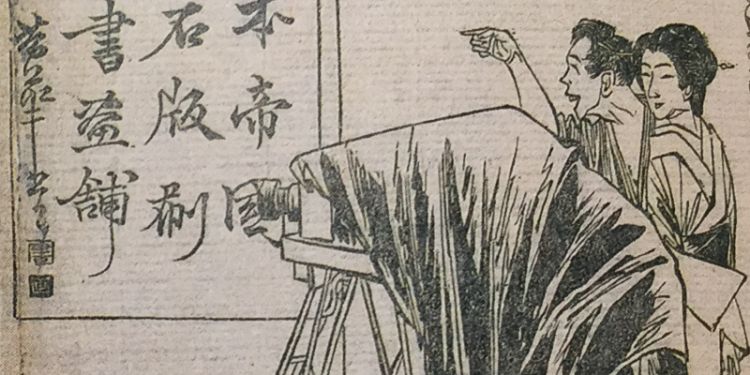Photography, Calligraphy and Delineation by the Individual Brush

Dr Maki Fukuoka recently shared her research on photography and Japanese visual culture as part of an East Asian Art History lecture series at Freie Universität Berlin.
Dr Maki Fukuoka is an Associate Professor in the School of Fine Art, History of Art and Cultural Studies at the University of Leeds. Maki’s research has long focused on the histories of photography and Japanese visual culture.
Her first book, The Premise of Fidelity: Science, Visuality, and Representing the Real in Nineteenth-century Japan, was published in 2012 by the Stanford University Press. It explores her interest in photography and the alternative mode of knowledge production. In 2022, the Getty Research Institute published her new translation book from Japanese to English, Antiquarians of Nineteenth-century Japan, written by Suzuki Hiroyuki.
Dr Fukuoka is currently working on the monograph tentatively called Shaping Likeness: Practices and Concepts in Portrait Photography. The project centres on portrait photographs and their function in a socio-political context in the nineteenth-century Japan and extends her interest in situating photographic history as a transdisciplinary subject.
Her talk at Freie Universität Berlin in February 2023 was a part of ongoing research undertaken for this project. She said:
“Earlier this year, I was invited to speak about my research for a lecture series on East Asian Art History organised by Professor Juiliane Noth and PhD students, and delivered a talk on Photography, Calligraphy and Delineation by the Individual Brush.
“My lecture focused on the history of portrait photography in the 1880s and 90s as a case study to address aspects of two key questions:
“Firstly, in the context of Japan, to what extent can photography be analysed as a separate and independent visual medium, as has been established by the Euro-American art historical discourse?
“Secondly, what are the links between the historical development of the uses of photography and the modernisation narrative that buttresses such a narrative?
“This talk specifically considered technological histories to explore the functions of portraits. From historical documents and visual archives of commercial advertisements and manuals, I examined portraits as the object of articulation that innovators such as Yokoyama Matsusaburō (1838-1884) grappled with, aesthetically, conceptually and materially.
“This research follows the findings of my first book, chronologically and intellectually, and uncovers the process by which photographic portrait became a site of confusion, clarification, and contestation in modern Japan. Words for portrait offers a curious starting point. About one hundred and sixty years ago, when photography became available in Japan, there were a host of expressions that could plausibly translate as ‘portrait’, each carrying a socially distinctive meaning.
“By situating portrait photography in a broader context of material culture and histories of seeing, my research uncovers how the concept of shōzō has become the most preferred term. And it does so by analysing how cultural, aesthetic, and societal values were calibrated and recalibrated through this process of articulation.”
Find out about Dr Fukuoka’s research.
Image
Kono Minotru, Mori Noboru, Oshima Hiroko eds., Egakareta Meiji no Nippon (Tokyo: Mainichi Shinbunsha, 2002), 248. Advertisement, woodblock printing, Tokyo, dated 1 June 1881.



